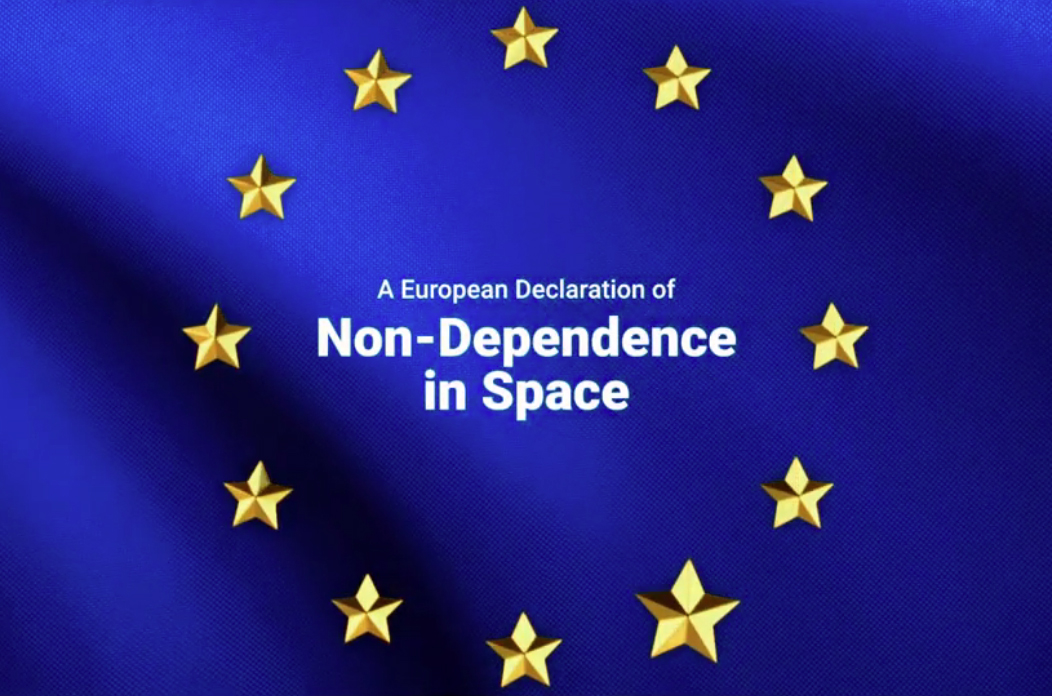CIMR-LDRS: The lighthouse project for non-dependence in European space travel enters the production phase of the qualification model (EQM) as planned
April 2025

CIMR-LDRS: The lighthouse project for non-dependence in European space travel enters the production phase of the qualification model (EQM) as planned
April 2025
Long before an unspeakable bloodbath sealed the end of peaceful life in Eastern Europe in 2022, the demand for technological “non-dependence” had already conquered a top position among the strategic priorities in German and European space travel. The focus was particularly on large reflector antennas that could be deployed in space, suitable for missions of all kinds.
The history of this German technology for Europe began more than a decade ago with SCALABE, a technology development funded by ESA, and SMERALDA (SME’s Radar and Large Deployable Antenna), a study funded by the German Space Agency with significant participation by antenna specialist HPS GmbH. Through further technical chapters of successful concretization of the goal with significant support from ESA and the EU, the Munich-based company finally led a consortium of mostly medium-sized partners from eight countries to the spectacular win of the 115 million euro contract from Prime`sThalesAlenia Space (TAS) for “CIMR LDRS” (Large Deployable Reflector Subsystem) in 2020: the world’s largest rotating deployable reflector antenna construction for the EU’s Copernicus Imaging Microwave Radiometer (CIMR) lighthouse project for observing land, ice and oceans, particularly the Arctic, from space under the management of the European Space Agency (ESA). The LDR subsystem consists of a reflector, arm, deconvolution electronics, cabling, various hold-down mechanisms and thermal hardware.
After a long design phase and intensive iteration with the direct customer TAS in Rome and the end customer ESA, the go-ahead was given in phase C/D with the completion of the first so-called “Manufacturing Readiness Review” for the construction and testing of a qualification model (Engineering Qualification Model, EQM). In these days of spring 2025, HPS has now finally entered the intensive phase of manufacturing the EQM.
Challenges on the way to new shores
The technical challenges were and are immense, as the goal is nothing less than a deployable reflector construct for high frequencies (Ka-band) with a diameter of eight meters on an equally deployable eight-meter-long arm that rotates around its own axis eight times per minute in orbit. This results in extreme requirements such as an RMS (Root Mean Square) value for the surface accuracy, which must be much smaller than 1/10 mm over the entire 50 m² reflector surface, or a maximum permissible deviation of the 8 m distant arm tip of just 10 mm from the nominal value, including vibrations, centrifugal force and thermal deformations.
The challenges of managing the various aspects of the project were and are no less demanding. The program management of the CIMR team from ESA and TAS has played a prominent role from the outset, while HPS GmbH, known for its heritage in institutional, military and commercial antenna construction – in addition to its own development work at arm and subsystem level – is responsible for managing the consortium of around a dozen SMEs, including such outstanding innovation drivers as Munich-based LSS GmbH for the deployable reflector assembly (DRA), based on a highly successful, long-standing development partnership. The lightweight carbon struts for the DRA come from the former Portuguese HPS subsidiary and now FHP, INVENT GmbH contributes the carbon fiber-reinforced tubes for the 8-meter deployable support arm (DAA), NanoSpace Switzerland develops and produces the high-precision yet stable, motor-driven joints of the arm, HPS Romania and INEGI Portugal the constructions for ground tests and transports (“MGSE”). In addition, HPS is responsible for providing the central element for the deployable reflector: the measurably best Ka-band MESH from HPtex that is available to buy in a 9m x 9m size – and, as a “made in Germany” product, transforms European non-dependence from vision to reality. Until then, a MESH in such dimensions had only been available in American production. Originally planned as an essential element of the German-European supply chain for CIMR, the joint venture HPTex GmbH (JV of Iprotex GmbH & Co. KG and HPS GmbH), founded in 2020, now sells its mesh products worldwide, especially in Asian and continental American countries. The EQM mesh for CIMR recently came out of HPtex production.
The most important components (DAA and DRA) will be ready by the end of the year, and the series of tests will begin early in 2026.
“If you want to be ahead, you shouldn’t be afraid of the unknown” (Ernst K. Pfeiffer)
When CIMR sets off on its mission in 2029 on board a Vega C in a sun-synchronous orbit to observe ice sheets and snow, among other things, from dawn to dusk, Europe will not only benefit from the knowledge gained from the project, but also from the certainty of having mastered the step towards technological LDRS independence. LDRS are also products for a range of military applications that can contribute to an increased defense capability, especially in these years. HPS CEO Ernst K. Pfeiffer sees this as a milestone that goes far beyond the immediate success of the project: “This space project is clear proof that the mentality of all those involved in the project – both industry and institutions – is completely different to the risk aversion that the public normally attributes to Germany in particular, and to some extent also to ESA. Not being afraid of the unknown is the first key to success. Way up front is where it´s getting dark. Especially in space. But not only there.”
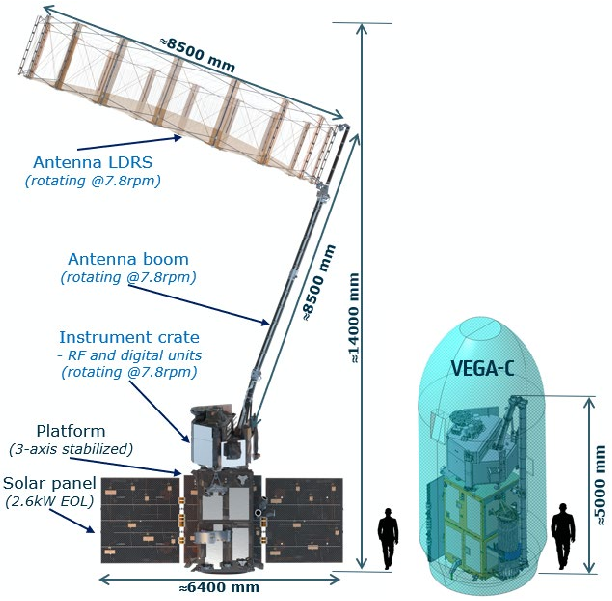
Oktober 2024
HPS Prominently Present at the IAC in Milano
Participating in the International Astronautical Congress, IAC, has developed into a good tradition at HPS over many years. This year, the company will be represented by Ernst K. Pfeiffer, CEO, together with ADEO project manager Mrs. Dorittya Milankowitch from HPS Munich and Horatiu Gheorghe as IAC-contact point for HPS Bucharest with products like secondary structures, thermal hardware and purging equipment. The HPS-team will keep up full presence during all five days of this international event.
Special highlights will be the company presentations; they are going to take place on Friday, 18th, from 10.15 to 10.45 a.m., and also as part of the Company Slam at the booth of the German association BDLI on Tuesday from 13.15 to 13.45 p.m..
Focus of both presentations will be on the product family of the ADEO deorbit sailsystem for automatic disposal of satellites after their end of mission, serving the idea of clean space, sustainability and debris avoidance even from the beginning of the satellite´s journey.
Main products besides ADEO to be asked at our booth: reflector antennas, deployable antennas, large deployable reflector subsystems, mesh, thermal hardware, purging equipment. HPS will warmly welcome there all its customers from both worlds: classic and NewSpace. For a dedicated prearranged business meeting please send a message to Contact@hps-gmbh.com.
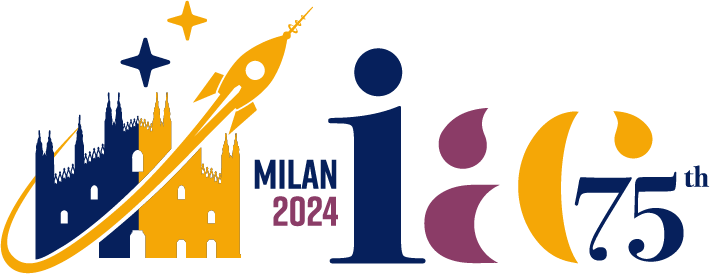
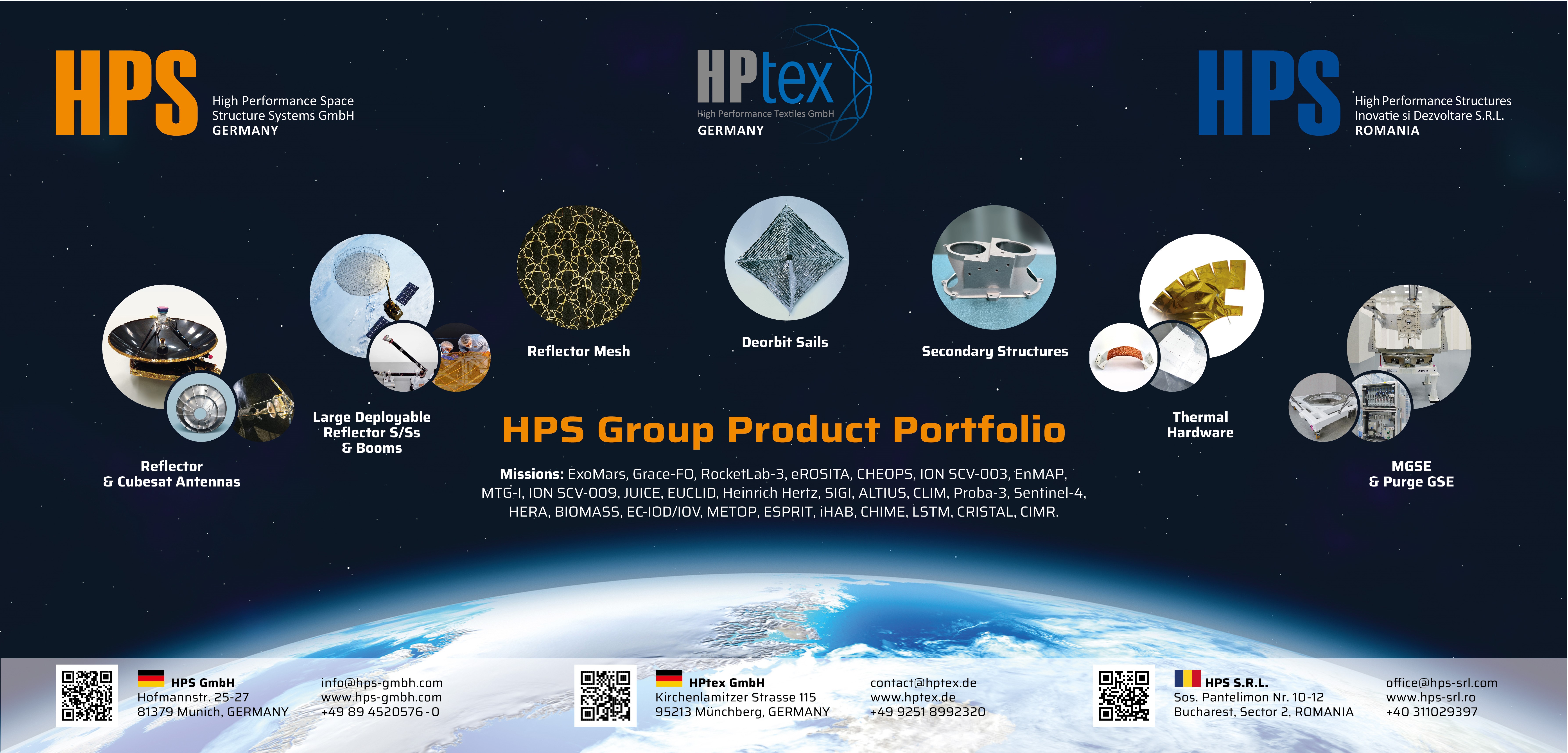
January 2023
Since the spectacular win of the €110 million contract in 2020 for the development and construction of an LDRS (Large Deployable ReflectorSubsystem) by the SME consortium led by HPS, the project supporting to secure a sovereign European level of innovation has been running like on rails despite all its complexity. The confidence of the end customer ESA and its prime contractor TAS-I for the mission, which has grown steadily over the course of the project’s development, has now found expression on 23.01.2023 in the sealing of the departure into Phase CD by the signing of the so-called “RIDER” for the construction and testing of a qualification model (EQM) in 2023/2024, followed by no less than two flight models (PFM and FM2).
The supporting technology pillars of the innovation project are, in addition to the main innovation partners LSS (development, construction and test of the large deployable reflector), the HPS subsidiary HPtex (mesh production for the reflector), FHP (CFRP struts for the reflector), INVENT (CFRP tube for the deployable arm) and vH&S (for the deployment control electronics), further 10 companies from seven European countries under the consortium leadership of HPS.
The Environmental Observation Mission under the Copernicus Earth Observation Program of the European Union is an essential element of the European Space Strategy as a highly ambitious project in the field of climate observation and the understanding of effects of climate change.
Photo (TAS-I): contract sealing – center: Massimo Camparini (CEO of the space company ThalesAleniaSpace Italy) and the CEOs of HPS, Ernst K. Pfeiffer (right) and of LSS, Leri Datashvili.
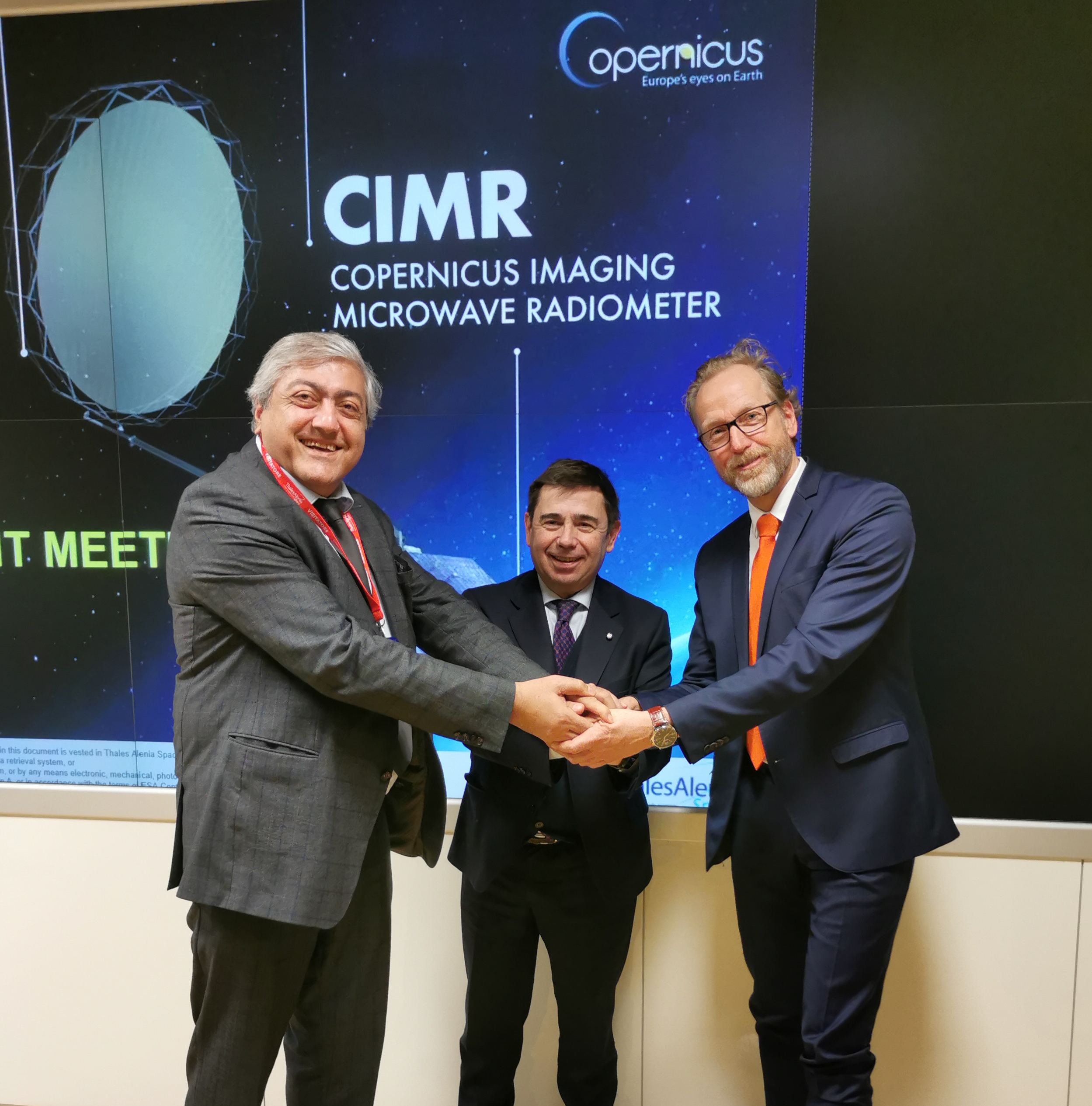
March 2022
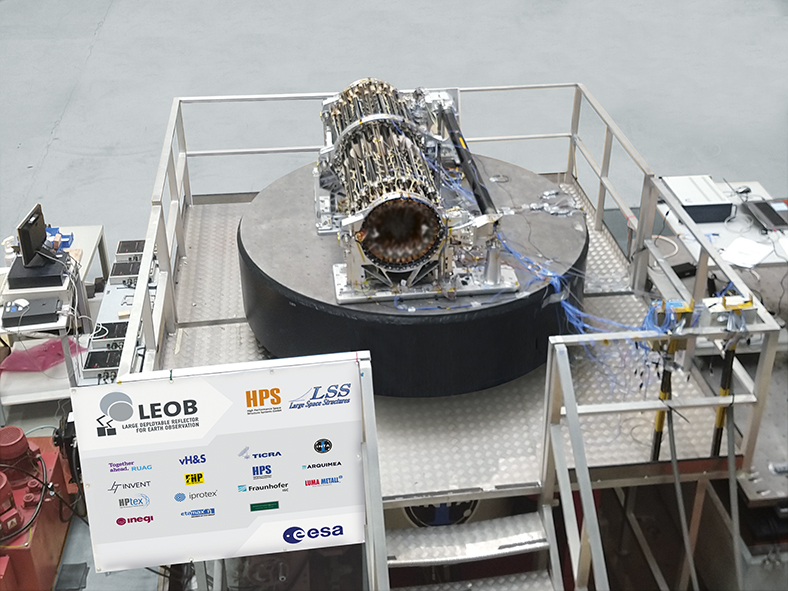
Juli 2021
Gladly we announce with a new 20-minutes-movie the completion of the H2020-development „LEA-X5“, the 5m class European Large Deployable Reflector Subsystem (LDRS) operating in X-band.
The film itself is of course showing recent environmental and deployment tests, but it is mainly about PEOPLE, who are space engineers and space enthusiasts, and what they can achieve with combined powers and brains. These people, together with the enablers European Commission and European Space Agency, are making the achievement of „European Non-dependance“ happen.
LEA-X5 is a full LDRS-Subsystem (lead by HPS, Germany) and comprises the
Further partners of the H2020-consortium have been: INVENT (DE), FHP (PT), INEGI (PT), TICRA (DK), LUMA (SW), HPTEX (DE), ARQUIMEA(SP), HPS (RO), ETAMAX (DE), WSS (DE), ONERA (FR), TAS (FR), OHB (DE), Airbus (DE).
Most of the consortium members are introduced in the movie, inluding many interviews.
Take your time and enjoy the spirit of doing big things: LEA-X5 – European 5m X-band LDRS Completed (Final Report 06/2021) – YouTube
Best regards,
Your WeLEA-Consortium
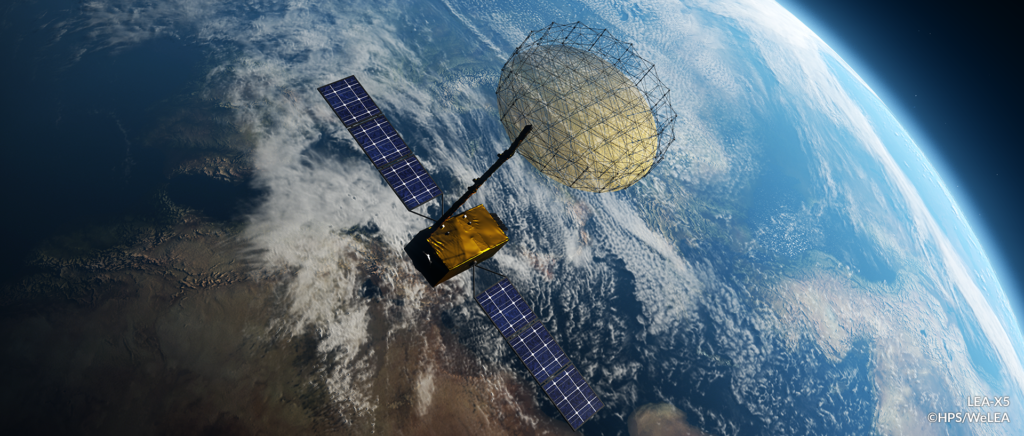
March 2021
Fifteen companies – mostly SMEs – from seven countries and one goal: a deployable 5-meter X-band-antenna as a preliminary development for the CIMR project, developed under the European H2020 program (2017-2021). For the first time ever, such a complete subsystem (HPS) has now been successfully assembled in Europe from the reflector- (LSS) and arm- (HPS) assemblies. Previously, the test deployment of the arm and reflector – each individually – had already been successfully passed.
LEA-X5-Subsystem is now at the premises of the consortium´s highly reliable test partner INTA in Spain, where vibration tests for the subsystem are on the agenda in the presence of the LSS- and HPS-teams. In a third round of testing, the subsystem will have to prove itself capable of withstanding the conditions of the thermal chamber.
The next complete subsystem-hardware in this context – the CIMR LDRS-EQM – will be assembled end 2023.
With the key technology behind LEA-X5, the continent is decisively expanding its independence from non-European sources.
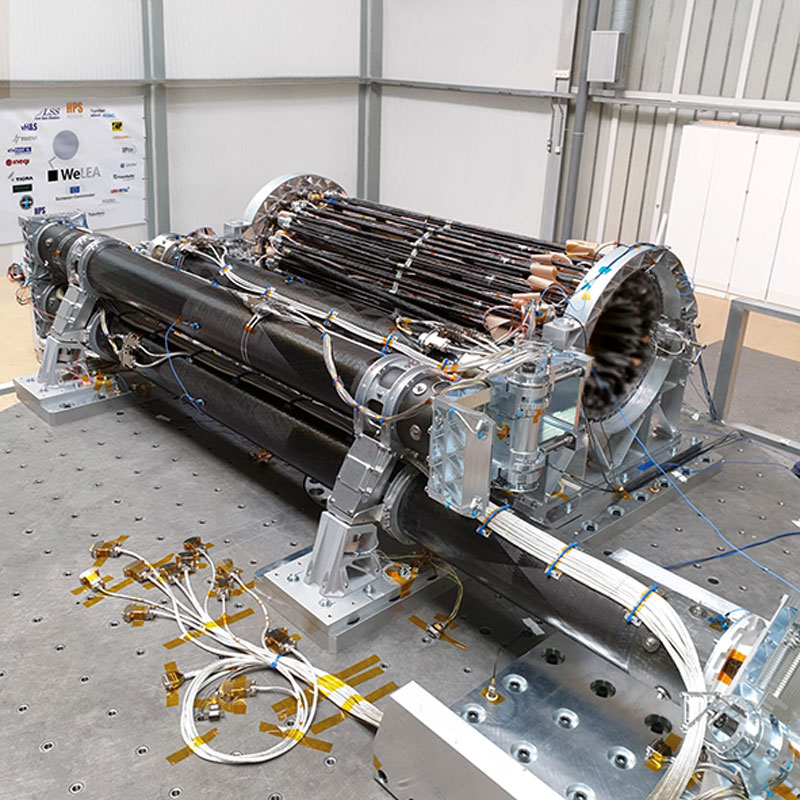
Januar 2015
Under the auspices of the German ministry of economy and energy and DLR Germany had decided to entrust a team of SME-companies under the lead of RWTH-Aachen and several other highly renowned institutes with studies about mission profiles and potentials based on large deployable antenna (LDA)-applications, named SMERALDA (SME´s Radar and Large Deployable Antenna). HPS, the mid-sized antenna specialist and leading space-subsystem manufacturer, was responsible for the central LDA-part of the project that provided a respective concept for a small-scale-mission using a 5-meter LDA.
The study was successfully finished mid December 2014 and presented to a large audience at the German Space Agency in Bonn including to one of DLR’s directors Mr. Christoph Hohage.
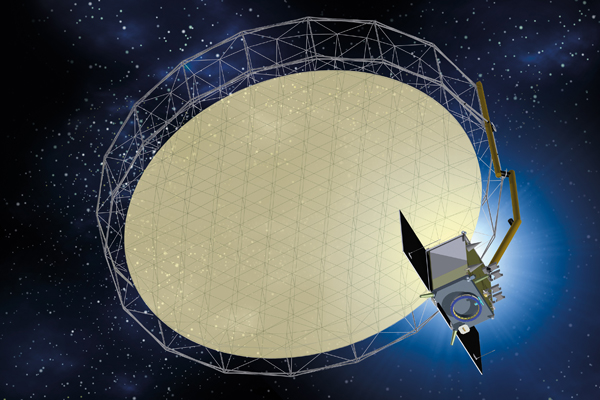
April 2019
Large deployable antenna reflectors are among the critical space technologies most urgently needed in Europe in order to drastically reduce the continent´s dependence on goodwill, knowhow, and supplies from the United States. Therefore, back in fall 2017 the EC decided to co-fund in the fame of its Horizon 2020-programm the 7 million € development-project LEA (Large European Antenna) of a consortium with 15 partners out of six European (D, SP, PT, SE, DK, FR) countries under the implementation leadership of HPS, Germany, among them also LSS GmbH (Germany) and RUAG Space Germany. A special cooperation between HPS and Northern Bavarian entities has already led to the development of the central component, the „European Space Mesh“; it will in future be produced in Bavaria. Now the project has taken its crucial milestone when it passed the Critical Design Review (CDR) in April 11-12, 2019, and is heading towards the final stage of its test campaign from February through August 2020. In exchange for the opportunity to gain flight heritage HPS offers the first product, LEA, for free to any customer worldwide.
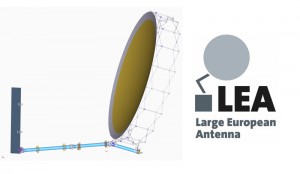
Major specs of LEA are: deployable reflector aperture at 5.1 meters with a 5.6 meter long deployable arm; a mass of just 100 kilo including reflector, arm, hold-down-and-release-mechanism, harness, thermal hardware, operating frequency: X-band. The stowed volume is as small as 2.6 x 1.2 x 0.6 meters.
This development is not only important in general, but serves also as a baseline for two potentially next Copernicus missions at the horizon with 8 and 12 meter reflector subsystems. The whole development program of LEA is based on precursors undertaken within the framework of ESA technology programs.
For more information on LEA please klick: www.welea.eu.
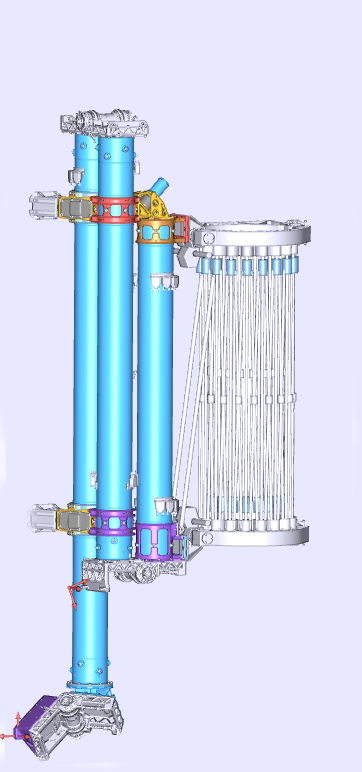
April 2019
Am 18. April 2019 besuchte Thomas Sattelberger (FDP), Bundestagsabgeordneter des Wahlkreises München Süd, den Raumfahrt-Mittelständler HPS. Als ausgewiesener Innovationsexperte interessierte er sich dabei vor allem für die vom deutschen Raumfahrt-Mittelstand ausgehenden Impulse für neue Technologien, mit denen Europa im Rahmen von EU und ESA seine Unabhängigkeit von Zulieferungen und Wohlwollen seitens der Konkurrenz anderer Kontinente gerade in kritischen Bereichen erkämpft.

Gerade auf diesem Gebiet hat HPS jüngst zwei bahnbrechende Erfolge zu verzeichnen: Die Entwicklung des HPS-Bremssegels ADEO zur schnellen Entsorgung ausgedienter Satelliten hat vor wenigen Monaten seinen Feuertest im All mit Bravour bestanden, und vor wenigen Tagen gewann ein von HPS geführtes Konsortium von 17 meist mittelständischen Raumfahrtunternehmen aus sechs Ländern gegen große Konkurrenz den Entwicklungsauftrag für die künftige große entfaltbare Antennentechnologie Europas mit Einsatzgebieten von Erdbeobachtung über Big Data und das Internet of Things bis hin zu militärischen und Telekommunikationsanwendungen.
HPS-CEO Dr. Ernst K. Pfeiffer nahm die Gelegenheit wahr, die Bedeutung des Ausbaus von Technologie-Programmen für die Raumfahrt-Zulieferindustrie auf nationaler und europäischer Ebene gerade auch für die Ermöglichung der Teilnahme an den steigenden internationalen Märkten und damit verbunden die Jobmaschine der Raumfahrt-KMU hervorzuheben. Die ESA Ministerratskonferenz 2019 liefert dafür die beste Gelegenheit, um sowohl die ESA-Technologieförderung über die Programme ARTES und GSTP sowie auch die deutsche Beteiligung am EU-Programm Kopernikus nachhaltig zu stärken. MdB Thomas Sattelberger bestätigte die enorme Bedeutung der Raumfahrt als Anwendung für die Menschen auf der Erde wie auch als Technologietreiber für andere Wirtschaftsbereiche. Seine Expertise hatte er selbst in langjähriger Arbeit im Bereich der bayerischen Luft- und Raumfahrttechnik gewonnen, bevor er nach seiner Position als Vorstandsmitglied bei der Deutschen Lufthansa und seiner letzten beruflichen Station als Vorstandsmitglied der Deutschen Telekom für die Freien Demokraten in den Bundestag einzog.
May 2019
The European consortium of 17 partners out of six European countries initiated and led by HPS GmbH has won the prestigious ESA contract for LEOB, the Large European Reflector for Earth Observation. The call had been initiated by ESA´s Earth Observation directorate in 2018.
The HPS consortium, including LSS Germany and RUAG Space Germany, won against severe competition from Italy, Spain, and the U.K.. Total budget amounts to 5 million €; taken together with contract number one on the development of a large deployable reflector out of late 2017, the budget to develop this critical technology now amounts to 12.5 million €. Future mission targets include geological changes, monitoring of vegetation, communications, Big Data, Internet of Things, and sciences.
Kick-off was on April 15th, 2019, the project will conclude with a tested Engineering Model exactly two years later in April 2021. It is the last precursor project before the development of a flight model for two future Copernicus missions: CIMR with a 7-8m reflector, operating in L- through Ka-band, rotating on top of the satellite at a speed of ten turns per minute, and ROSE-L with 12 meters of diameter, operating in L-band.
Precursing ESA-technology programs and LEA out of Horizon 2020 had laid the foundations for this great success.
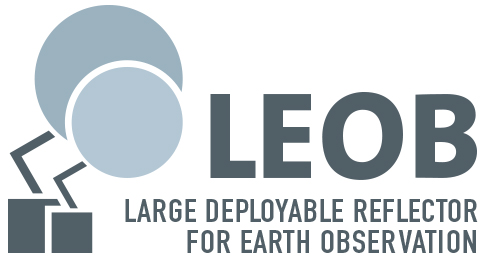
October 2019
Dear Friends and Fans of Europe in Space,
in the name of all members of our pan-European WeLEA-consortium we proudly present a video, documenting the successful road of the development of one of the most needed critical technologies in space: the Deployable Large European Antenna (LEA).
Invented, designed, tested and manufactured by more than 15 well known space companies from 7 European countries with a total staff of more than 500 dedicated specialists, representing a truly unique team of SMEs and Midcaps, the LEA-product is now taking shape as nothing less than “A European Declaration of Non-dependence in Space”.
Thanks to the farsighted vision of both powerful institutions responsible for our continent´s future in space, the European Space Agency ESA and the European Commission EC, LEA will become an invaluable technological asset to blaze our own trail towards knowledge and understanding as indispensable prerequisites to making this world a sustainable, better place – for life in diversity, for all citizens on the globe, and for one Europe across all its internal borders.
Within the WeLEA consortium HPS Germany, as prime contractor, is responsible for the project- and technical management of the whole LEA-subsystem, the deployable arm assembly and the reflective metal mesh.
